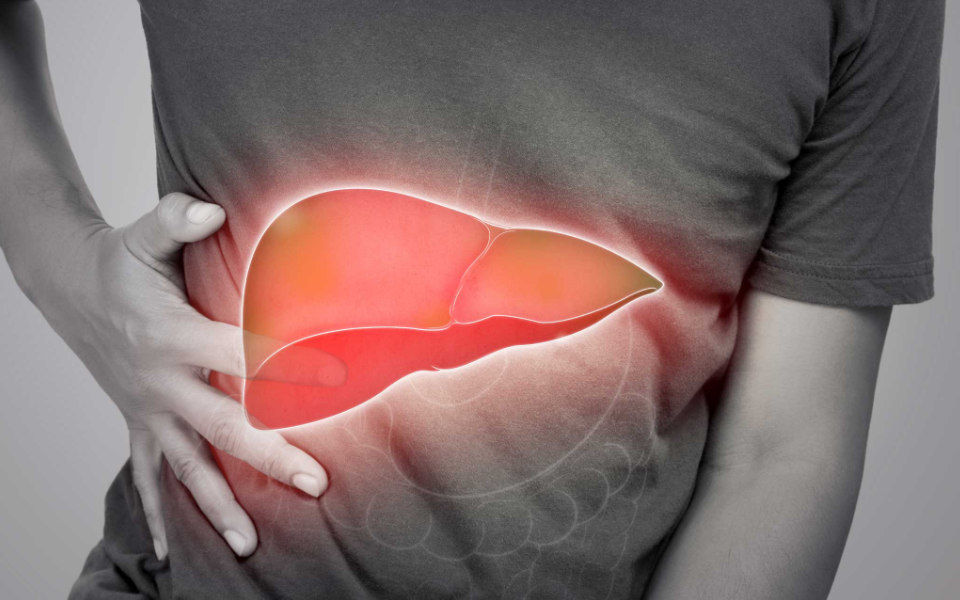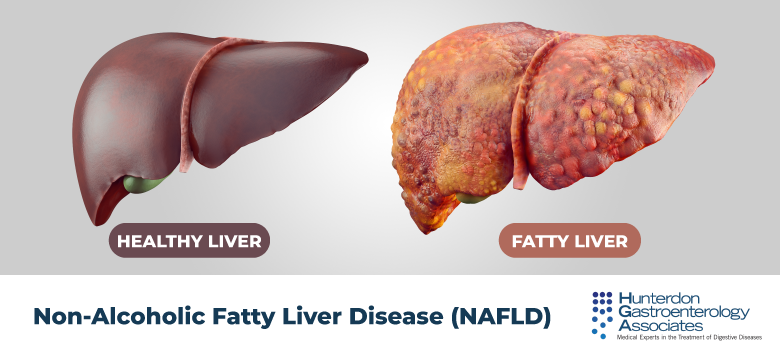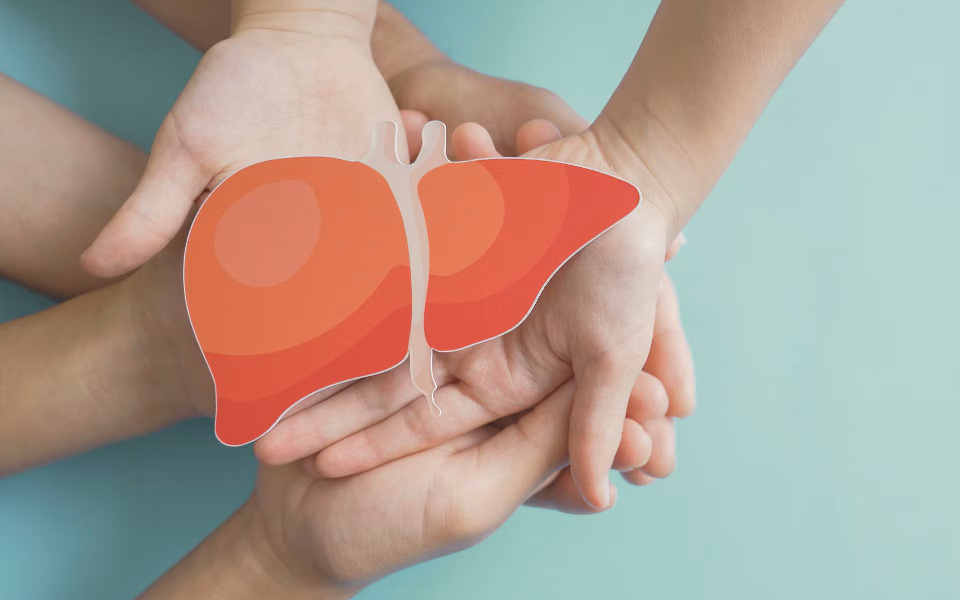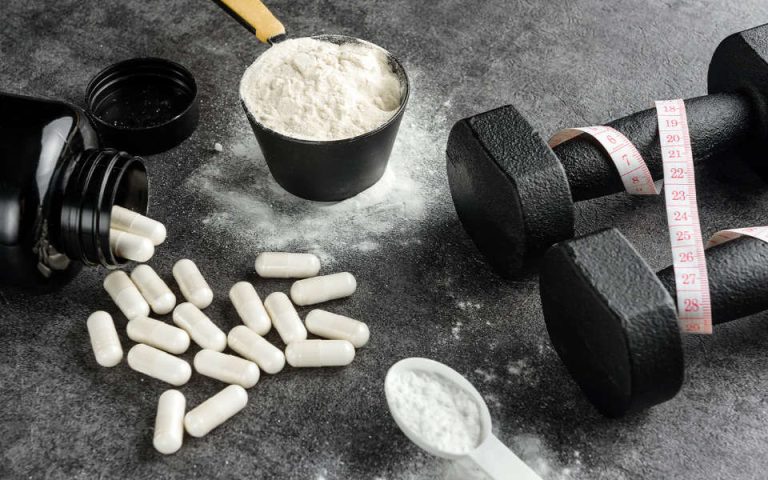Diabetes and liver health are connected, with each condition potentially exacerbating the other. Diabetes, a health condition distinguished by high blood sugar levels, comes in two primary forms: Type 1 and Type 2. The liver, a vital organ responsible for numerous metabolic processes, plays a fundamental role in managing blood glucose levels. Understanding the relationship between diabetes and liver health is essential to manage diabetes effectively and prevent complications.
Type 1 Diabetes is an autoimmune condition where the body’s immune system attacks insulin-producing beta cells in the pancreas. This results in little to no insulin production, requiring people to rely on insulin therapy for blood sugar control.
Type 2 Diabetes is more common and is described by insulin resistance, where the body’s cells do not respond effectively to insulin. Over time, the pancreas cannot produce enough insulin to maintain normal blood glucose levels. Type 2 diabetes is often associated with obesity, physical inactivity, and genetic factors.
The liver is the largest internal organ and performs over 500 essential functions, including:
- Glucose Regulation: The liver stores and releases glucose as needed, maintaining blood sugar levels through processes like glycogenolysis and gluconeogenesis.
- Detoxification: The liver filters toxins from the blood, including alcohol and medications, and converts them into harmless substances for excretion.
- Bile Production: Bile, produced by the liver, aids in the digestion and absorption of fats.
- Protein Synthesis: The liver produces essential proteins, such as albumin and clotting factors, necessary for blood clotting and maintaining fluid balance.
Diabetes significantly increases the risk of developing liver diseases, specifically non-alcoholic fatty liver disease (NAFLD). NAFLD is characterised by the accumulation of fat in the liver, which can progress to more severe conditions like non-alcoholic steatohepatitis (NASH), cirrhosis, and liver cancer.
The relationship between diabetes and liver disease is bi-directional:
- Diabetes Leading to Liver Disease: Insulin resistance and hyperglycaemia associated with diabetes contribute to fat accumulation in the liver, promoting inflammation and fibrosis.
- Liver Disease Exacerbating Diabetes: Liver dysfunction can impair glucose metabolism, worsening insulin resistance and making blood sugar control more challenging for diabetics.
Understanding this complex interplay is crucial for managing both conditions effectively and preventing long-term complications. Regular monitoring of liver function and maintaining good glycemic control are essential strategies for people with diabetes to protect their liver health.
Understanding Diabetes
1. Types of Diabetes
Type 1 Diabetes: Causes, Symptoms, and Management
Causes:
Type 1 diabetes is an autoimmune condition where the immune system attacks and destroys insulin-producing beta cells in the pancreas. The exact cause is unknown, but genetic and environmental factors are believed to play a role. Family history can increase the risk, but we don’t know a way to prevent the disease [1].
Symptoms:
- Extreme thirst
- Increased hunger, especially after eating
- Dry mouth
- Frequent urination
- Unexplained weight loss
- Fatigue and weakness
- Blurred vision
- Recurrent infections (e.g., skin, urinary tract)
- Mood changes
- In severe cases, diabetic ketoacidosis (DKA), is characterised by nausea, vomiting, rapid breathing, and fruity-smelling breath [2].
Management:
- Insulin Therapy: Essential for survival, administered through injections or an insulin pump [3].
- Blood Sugar Monitoring: Regular checks to maintain blood glucose levels within a target range.
- Diet and Exercise: Counting carbohydrates, maintaining a balanced diet and regular physical activity are crucial for managing blood sugar levels.
- Education and Support: Ongoing education about diabetes management and support from healthcare providers and diabetes educators.
Type 2 Diabetes: Causes, Symptoms, and Management
Causes:
Type 2 diabetes is primarily caused by insulin resistance, where the body’s cells do not respond effectively to insulin. Over time, the pancreas cannot produce enough insulin to maintain normal blood glucose levels. Risk factors include obesity, physical inactivity, genetic predisposition, and age (more common in middle-aged and older adults) [4].
Symptoms:
- Increased thirst and urination
- Increased hunger
- Fatigue
- Blurred vision
- Numbness or tingling in the feet or hands
- Slow-healing sores
- Unexplained weight loss
- Symptoms often develop slowly and may be mild, leading to delayed diagnosis.
Management:
- Lifestyle Changes: Healthy eating, regular physical activity, and weight management are fundamental.
- Medications: Commonly prescribed medications include metformin, sulfonylureas, DPP-4 inhibitors, SGLT2 inhibitors, and GLP-1 receptor agonists. Insulin may be required if other medications are insufficient [5].
- Monitoring: Regular blood sugar monitoring and periodic A1C tests to assess long-term glucose control.
- Education and Support: Working with healthcare providers and health coaches to develop a personalised diabetes strategy.
2. Diabetes and Blood Sugar Regulation
Role of Insulin and Glucagon:
- Insulin: Produced by the pancreas, insulin facilitates glucose uptake into cells for energy, lowering blood sugar levels.
- Glucagon: Also produced by the pancreas, glucagon stimulates the liver to release stored glucose (glycogen) into the bloodstream, raising blood sugar levels.
Impact of Diabetes on Blood Sugar Levels:
- Type 1 Diabetes: Lack of insulin production leads to high blood sugar levels (hyperglycaemia). Without insulin, glucose cannot enter cells, resulting in energy deficiency and increased blood sugar.
- Type 2 Diabetes: Insulin resistance and insufficient insulin production cause elevated blood sugar levels. Cells do not respond effectively to insulin, leading to glucose accumulation in the blood.
Both types of diabetes require careful management to maintain blood sugar levels within a healthy range and prevent complications such as cardiovascular disease, neuropathy, retinopathy, and kidney damage.
The Liver and Its Functions

1. Anatomy and Physiology of the Liver
Basic Liver Structure
The liver is the largest internal organ in the human body, weighing approximately 1.5 kg in adults. It is located in the upper right quadrant of the abdominal cavity, just below the diaphragm. The liver has a unique dual blood supply:
- The hepatic artery delivers oxygenated blood from the heart
- The portal vein brings nutrient-rich blood from the intestines
Structurally, the liver is divided into two main lobes (right and left) and further subdivided into approximately 100,000 lobules. Each lobule contains hepatocytes (liver cells) arranged in plates radiating from a central vein.
Liver Key Functions
- Glucose Regulation: The liver plays a crucial role in maintaining blood glucose levels by storing excess glucose as glycogen and releasing it when needed.
- Detoxification: It filters toxins from the blood, including drugs, alcohol, and other harmful substances, converting them into less harmful compounds for excretion.
- Bile Production: The liver produces bile, which is essential for fat digestion and absorption in the small intestine.
- Protein Synthesis: It manufactures important proteins such as albumin (for maintaining blood volume) and clotting factors.
- Cholesterol Production and Regulation: The liver produces cholesterol and regulates its levels in the bloodstream.
- Vitamin and Mineral Storage: It stores vitamins (A, D, E, K, B12) and minerals (iron and copper) for future use.
2. Liver’s Role in Metabolism
Glycogen Storage and Release (Glycogenolysis)
The liver is a primary site for glycogen storage. When blood glucose levels are high, such as after a meal, the liver converts excess glucose into glycogen through a process called glycogenesis. When blood glucose levels drop, the liver breaks down glycogen into glucose through glycogenolysis, releasing it into the bloodstream to maintain stable blood sugar levels.
Glucose Production (Gluconeogenesis)
When glycogen stores are depleted, the liver can produce glucose from non-carbohydrate sources such as amino acids, lactate, and glycerol. This process, called gluconeogenesis, is crucial for maintaining blood glucose levels during fasting or prolonged exercise.
Ketone Production (Ketogenesis)
During periods of low carbohydrate availability or fasting, the liver produces ketone bodies from fatty acids through a process called ketogenesis. Ketones serve as an alternative energy source for the brain and other tissues when glucose is scarce. This process is particularly important in people with diabetes, as it can lead to a dangerous condition called diabetic ketoacidosis if uncontrolled.
The liver’s metabolic functions are tightly regulated by hormones, primarily insulin and glucagon:
- Insulin promotes glycogen storage and inhibits glucose production
- Glucagon stimulates glycogen breakdown and glucose production
In diabetes, the disruption of these hormonal signals can lead to impaired liver function and metabolic imbalances. For instance, in Type 2 diabetes, insulin resistance in the liver can result in excessive glucose production, contributing to hyperglycaemia.
Understanding the liver’s central role in metabolism is crucial for knowing the complex relationship between diabetes and liver health. The liver’s ability to regulate glucose levels and respond to insulin is fundamental to maintaining overall metabolic health, and disruptions in these processes can significantly impact diabetes management and liver function.
Connection Between Diabetes and Liver Health

1. Non-Alcoholic Fatty Liver Disease (NAFLD)
Prevalence in Diabetics
Non-alcoholic fatty Liver Disease (NAFLD) refers to the accumulation of fat in the liver cells, not caused by alcohol consumption. It is the most common chronic liver disorder globally, particularly prevalent in individuals who are overweight or obese [6]. NAFLD is common among people with Type 2 diabetes, with studies indicating that up to 70% of diabetic patients may have some form of NAFLD [7].
Risk Factors
Several risk factors increase the likelihood of developing NAFLD, including:
- Obesity: Specifically central obesity, where fat is concentrated around the abdomen [8].
- Type 2 Diabetes: Insulin resistance is a significant contributor.
- High Cholesterol and Triglycerides: Elevated levels of fats in the blood.
- High Blood Pressure: Hypertension is commonly associated with NAFLD.
- Metabolic Syndrome: A cluster of conditions including obesity, high blood pressure, high blood sugar, and abnormal cholesterol levels.
- Other Factors: Age over 50, smoking, and certain medical conditions like polycystic ovary syndrome and an underactive thyroid.
Symptoms and Diagnosis
NAFLD is often a silent disease with few or no symptoms in its early stages. When symptoms do occur, they may include:
- Fatigue
- Discomfort or pain in the upper right abdomen
- Unexplained weight loss
- Weakness
Advanced stages, such as non-alcoholic steatohepatitis (NASH) and cirrhosis, may present more severe symptoms like jaundice, severe itching, abdominal swelling (ascites), and swelling in the legs (oedema).
Diagnosis typically involves blood tests showing elevated liver enzymes, imaging tests like ultrasound, and sometimes a liver biopsy to confirm the extent of liver damage.
2. Bi-Directional Relationship
How Diabetes Can Lead to Liver Disease
Diabetes, mainly Type 2, can lead to liver disease through several mechanisms:
- Insulin Resistance: A hallmark of Type 2 diabetes, insulin resistance promotes fat accumulation in the liver.
- Hyperglycaemia: High blood sugar levels contribute to oxidative stress and inflammation in the liver.
- Dyslipidaemia: Abnormal lipid levels in diabetes can exacerbate fat deposition in the liver.
How Liver Disease Can Contribute to Diabetes Development
Liver disease can also worsen or contribute to the development of diabetes:
- Impaired Glucose Metabolism: Liver dysfunction can disrupt glucose production and storage, leading to impaired fasting glucose and insulin resistance.
- Inflammation and Cytokines: Liver inflammation releases cytokines that can interfere with insulin signalling, worsening insulin resistance.
3. Metabolic Dysfunction-Associated Steatotic Liver Disease (MASLD)
Formerly Known as NAFLD
The term Non-Alcoholic Fatty Liver Disease (NAFLD) is being replaced by Metabolic Dysfunction-Associated Steatotic Liver Disease (MASLD) to better reflect its association with metabolic dysfunction. Similarly, Non-Alcoholic Steatohepatitis (NASH) is being renamed Metabolic Dysfunction-Associated Steatohepatitis (MASH) [9].
Screening and Diagnosis
Screening and Diagnosis for MASLD involve:
- Blood Tests: To check for elevated liver enzymes.
- Imaging Tests: Ultrasound, CT scans, or MRI to visualise fat accumulation in the liver.
- Fibrosis-4 (FIB-4) Testing: A non-invasive test to assess liver fibrosis and the risk of progression to more severe liver disease.
Early detection and lifestyle interventions, such as weight loss, healthy diet, and regular exercise, are crucial in managing MASLD and preventing its progression to more severe forms like MASH and cirrhosis.
Understanding the intricate link between diabetes and liver health underscores the importance of comprehensive care strategies that address metabolic and hepatic health to prevent complications and improve patient outcomes.
Impact of Diabetes on Liver Health
1. Insulin Resistance and Liver Disease
Mechanisms of Insulin Resistance in the Liver
Insulin resistance is a key pathological feature of both Type 2 diabetes and non-alcoholic fatty liver disease (NAFLD). In the liver, insulin resistance disrupts normal metabolic processes, leading to several adverse effects:
- Impaired Glucose Uptake and Storage: Normally, insulin promotes the uptake and storage of glucose as glycogen in the liver. In insulin resistance, this process is impaired, leading to elevated blood glucose levels.
- Increased Gluconeogenesis: Insulin resistance fails to suppress gluconeogenesis, the production of glucose from non-carbohydrate sources, exacerbating hyperglycaemia.
- Enhanced Lipogenesis: Insulin resistance can paradoxically increase lipogenesis (fat synthesis) in the liver, contributing to hepatic steatosis (fat accumulation) [10][11].
- Inflammation and Fibrosis: Chronic insulin resistance leads to inflammation and activation of hepatic stellate cells, promoting fibrosis and progression to more severe liver disease [12].
Impact on Liver Function and Disease Progression
The impact of insulin resistance on liver function can be profound, leading to a progression from simple steatosis to more severe conditions:
- Simple Steatosis: Early stage indicated by fat accumulation in the liver without significant inflammation or damage.
- Non-Alcoholic Steatohepatitis (NASH): Progression to NASH involves inflammation and hepatocellular injury, increasing the risk of fibrosis.
- Fibrosis: Continued inflammation and stellate cell activation lead to the deposition of extracellular matrix proteins, resulting in fibrosis.
- Cirrhosis: Advanced fibrosis can progress to cirrhosis, described by severe scarring and impaired liver function. Cirrhosis significantly increases the risk of liver failure and hepatocellular carcinoma (HCC) [13].
2. Progression to Advanced Liver Disease
Development of Non-Alcoholic Steatohepatitis (NASH)
NASH is a more severe form of NAFLD, characterised by liver inflammation and damage in addition to fat accumulation. Risk factors for NASH include obesity, Type 2 diabetes, and metabolic syndrome. Approximately 10-20% of patients with NAFLD may progress to NASH, which can further advance to cirrhosis and liver cancer [14].
Risk of Cirrhosis and Liver Cancer
- Cirrhosis: Up to 10% of patients with NASH will eventually develop cirrhosis, a condition where normal liver tissue is replaced by scar tissue, leading to impaired liver function. Cirrhosis is associated with significant morbidity and mortality and is a major risk factor for hepatocellular carcinoma (HCC).
- Liver Cancer: Patients with cirrhosis, specifically those with underlying NASH, are at increased risk of developing HCC. The chronic inflammation and fibrosis associated with NASH create a pro-carcinogenic environment [15].
Need for Liver Transplantation
In advanced stages, liver transplantation may be the only viable treatment option for patients with cirrhosis or liver cancer. However, the presence of diabetes can complicate both the surgical procedure and post-transplant management due to increased risks of infections, cardiovascular complications, and graft rejection.
Understanding the impact of diabetes on liver health underscores the importance of early intervention and comprehensive management strategies to prevent the progression of liver disease. Regular monitoring, lifestyle changes, and appropriate medical treatments are essential to mitigate the risks and improve outcomes for patients with diabetes and liver disease.
Managing and Preventing Liver Disease in Diabetics

1. Lifestyle Changes
Importance of Diet and Exercise
Diet and exercise are the foundation for managing and preventing liver disease in diabetic patients. Lifestyle changes can significantly improve metabolic parameters, reduce liver fat, and enhance overall liver health.
- Diet: A balanced diet low in carbohydrates and saturated fats is crucial. Reducing sugar intake can help decrease hepatic fat accumulation. Diets rich in vegetables, fruits, whole grains, and lean proteins are recommended [16].
- Exercise: Regular physical activity helps improve insulin sensitivity and reduce liver fat. Even moderate exercise can have substantial benefits for liver health and overall metabolic function [17].
Weight Management Strategies
Effective weight management is essential for reducing the risk of liver disease in diabetics. Strategies include:
- Caloric Restriction: Consuming fewer calories than the body needs can help achieve and maintain weight loss. Personalised diet plans, such as low-carb or Mediterranean diets, can be effective [18].
- Behavioural Changes: Integrating sustainable lifestyle changes, such as mindful eating and regular physical activity, can support long-term weight management.
- Support Systems: Engaging with healthcare providers, dietitians, coaches and support groups can provide the necessary guidance and motivation for weight loss.
Reducing Carbohydrate and Saturated Fat Intake
- Carbohydrates: Reducing the intake of refined carbohydrates and sugars can help manage blood glucose levels and reduce liver fat. Emphasising complex carbohydrates with a low glycemic index can be helpful.
- Saturated Fats: Limiting saturated fats found in processed foods can help reduce liver fat and improve insulin sensitivity.
2. Medical Interventions
Medications
Several medications are being explored for their potential to treat NAFLD and NASH in diabetic patients:
- Semaglutide: A GLP-1 receptor agonist that has shown promise in reducing liver fat and improving liver histology in patients with NASH.
- Tirzepatide: A dual GIP and GLP-1 receptor agonist that may offer help in weight reduction and liver health.
- Resmetirom: A thyroid hormone receptor-beta agonist that targets liver fat reduction and has shown positive results in clinical trials [19].
Potential Future Treatments
Research is ongoing to develop new pharmacological treatments for liver disease in diabetic patients. Future therapies may include novel agents targeting specific pathways involved in liver fat metabolism and inflammation.
Role of Bariatric Surgery
Bariatric surgery is a viable option for patients with severe obesity and NAFLD or NASH. It can lead to significant weight loss, improve metabolic parameters, and reduce the risk of liver disease progression:
- Types of Surgery: Common procedures include Roux-en-Y gastric bypass (RYGB) and sleeve gastrectomy (SG), which have shown effectiveness in improving liver health.
- Benefits: Bariatric surgery can induce long-term weight loss, improve insulin sensitivity, and reduce the risk of major adverse liver and cardiac outcomes.
- Considerations: Surgery may be recommended for patients with a BMI ≥35 kg/m² with obesity-related comorbidities or a BMI ≥40 kg/m².
Managing and preventing liver disease in diabetic patients requires a multifaceted approach that includes lifestyle changes, medical interventions, and, in some cases, surgical options. By adopting a healthy diet, engaging in regular physical activity, and using appropriate medical treatments, patients can significantly improve their liver health and overall quality of life. Regular monitoring and proactive management are essential to prevent the progression of liver disease and associated complications.
Monitoring and Early Detection
1. Regular Screening and Tests
Importance of Early Detection
Early detection of liver disease in diabetics is crucial for preventing progression to more severe conditions such as non-alcoholic steatohepatitis (NASH), cirrhosis, and liver cancer. Identifying liver disease at an early stage allows for timely intervention, which can significantly improve outcomes and reduce the risk of complications. Given that liver disease often progresses silently without noticeable symptoms, regular screening is essential for at-risk populations, specifically those with Type 2 diabetes.
Recommended Tests
To effectively monitor liver health in diabetic patients, a combination of screening methods is recommended:
- Liver Ultrasound: A non-invasive imaging test that can detect fat accumulation in the liver, indicating the presence of NAFLD. It is often used as a first-line screening tool.
- Blood Tests: These include liver function tests (LFTs) to measure enzymes such as alanine aminotransferase (ALT) and aspartate aminotransferase (AST). Elevated levels can indicate liver inflammation or damage.
- Non-Invasive Fibrosis Tests: These tests assess the extent of liver fibrosis and include:
- Fibrosis-4 (FIB-4) Index: A calculation based on age, ALT, AST, and platelet count to estimate liver fibrosis. A FIB-4 score ≥1.3 suggests a need for further evaluation by a liver specialist [20].
- Vibration Controlled Transient Elastography (VCTE): Also known as FibroScan, this test measures liver stiffness to assess fibrosis.
2. Managing Blood Sugar Levels
Strategies for Maintaining Optimal Blood Sugar Levels
Maintaining optimal blood sugar levels is vital for preventing and managing liver disease in diabetic patients. Effective strategies include:
- Dietary Control: Adopting a balanced diet low in refined sugars and saturated fats. Emphasising whole grains, lean proteins, and plenty of fruits and vegetables can help manage blood glucose levels and reduce liver fat.
- Regular Physical Activity: Engaging in regular exercise improves insulin sensitivity and helps control blood sugar levels. Try at least 150 minutes of moderate-intensity aerobic activity per week.
- Medication: Following prescribed medication regimens, including insulin or oral hypoglycaemics, to maintain blood sugar control.
- Monitoring Blood Glucose: Regularly checking blood sugar levels to ensure they remain within the target range. Continuous glucose monitoring (CGM) devices can provide real-time data and help adjust treatment plans.
Role of Healthcare Providers in Monitoring Liver Health
Healthcare providers play a critical role in the early detection and management of liver disease in diabetic patients. Their responsibilities include:
- Routine Screening: Implementing regular screening protocols for liver disease in diabetic patients, including annual liver function tests and periodic imaging studies.
- Risk Stratification: Identifying high-risk patients based on factors such as obesity, metabolic syndrome, and elevated liver enzymes. Using tools like the FIB-4 index to assess fibrosis risk [21].
- Patient Education: Educate patients about the importance of liver health, the risks associated with diabetes, and the benefits of lifestyle changes.
- Referral to Specialists: Referring patients with suspected or confirmed liver disease to hepatologists for further evaluation and management. This is particularly important for those with intermediate or high risk of advanced fibrosis.
- Integrated Care: Coordinating care between endocrinologists, primary care physicians, and hepatologists to ensure inclusive management of both diabetes and liver health.
By adopting a proactive approach to monitoring and early detection, healthcare providers can significantly reduce the burden of liver disease in diabetic patients, improving their overall health outcomes and quality of life.
Conclusion
The link between diabetes and liver health underscores the need for comprehensive management of both conditions. Diabetes, particularly Type 2, significantly increases the risk of developing non-alcoholic fatty liver disease (NAFLD) and its more severe form, non-alcoholic steatohepatitis (NASH). Insulin resistance, a common feature of Type 2 diabetes, plays a key role in the development and progression of liver disease. Conversely, liver disease can exacerbate diabetes by impairing glucose metabolism and increasing insulin resistance.
Proactive management and prevention are essential to mitigate the risks associated with the interplay between diabetes and liver disease. Early detection through regular screening, lifestyle changes, and appropriate medical interventions can prevent the progression of liver disease and improve overall health outcomes. Managing blood sugar levels, maintaining a healthy weight, and adopting a balanced diet are critical strategies for protecting liver health in diabetic patients.
Regular check-ups and monitoring are vital for early detection and management of liver disease in diabetic patients. Healthcare providers should implement routine screening protocols and educate patients on the importance of liver health. Patients are encouraged to:
- Schedule regular medical check-ups, including liver function tests and imaging studies.
- Adopt a healthy lifestyle with a balanced diet and regular physical activity.
- Monitor blood sugar levels consistently and follow prescribed medication regimens.
Raising awareness and educating patients and healthcare providers about the connection between diabetes and liver health is crucial. Increased awareness can lead to earlier diagnosis, better management, and improved outcomes. Key educational points include:
- Understanding the risk factors and symptoms of liver disease in diabetic patients.
- Recognising the importance of lifestyle changes in preventing and managing liver disease.
- Staying informed about new medical treatments and interventions for liver disease.
By fostering a proactive approach to liver health in diabetic patients, we can significantly reduce the burden of liver disease and enhance the quality of life for those affected by both conditions.
Stay Informed & Inspired with Our Newsletter
Sign up for our newsletter to stay informed about the latest updates, episodes, helpful tips and strategies for diabetes management and holistic wellness.


